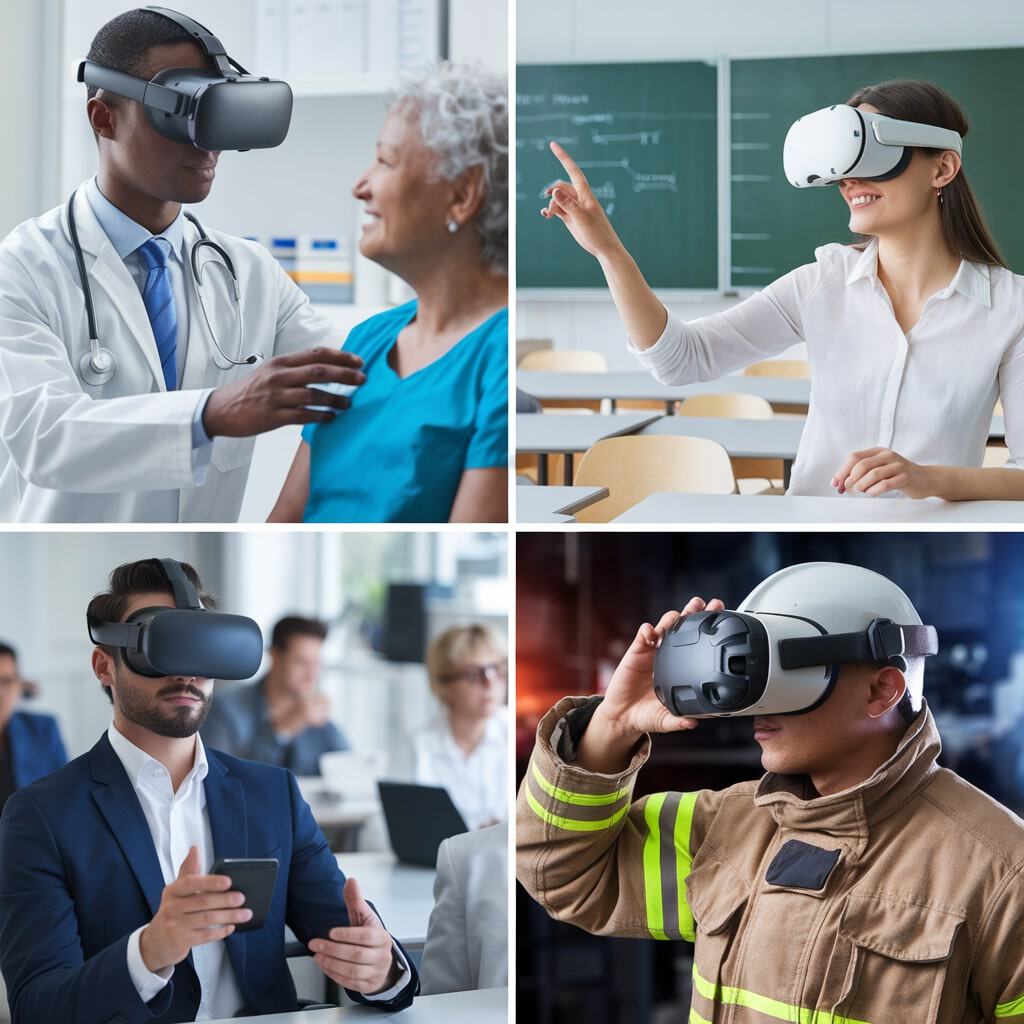Virtual Reality (VR) has long been associated with gaming, offering immersive experiences that transport players to entirely new worlds. However, VR’s impact extends far beyond entertainment. Industries ranging from healthcare to education and even real estate are leveraging VR technology to improve efficiency, enhance training, and redefine customer experiences. Let’s explore how VR is revolutionizing various sectors and shaping the future of different industries.

1. Healthcare and Medical Training
VR is making significant advancements in the medical field by providing cutting-edge solutions for both patients and professionals. Some key applications include:
- Surgical Training: Medical students and surgeons can practice complex procedures in a risk-free, realistic virtual environment before working on real patients.
- Pain Management: VR is being used as a distraction technique to help patients manage chronic pain and anxiety during treatments.
- Therapeutic Applications: VR exposure therapy is proving effective in treating PTSD, phobias, and other mental health disorders by gradually exposing patients to controlled simulations of their fears.
2. Education and Workforce Training
The education sector is undergoing a transformation with VR-powered learning experiences. Instead of relying solely on textbooks and lectures, students can engage in hands-on, immersive simulations.
- Virtual Field Trips: Students can explore historical landmarks, outer space, or deep-sea ecosystems without leaving the classroom.
- Vocational Training: From electricians to airline pilots, VR simulations provide realistic training scenarios to improve skills and preparedness in high-risk industries.
- Soft Skills Development: Employees can practice communication, leadership, and conflict resolution in controlled VR environments before applying them in the real world.
3. Real Estate and Architecture
VR is changing the way people buy, sell, and design properties.
- Virtual Property Tours: Prospective buyers can explore homes and commercial properties in 3D without visiting in person, saving time and resources.
- Architectural Visualization: Architects and interior designers use VR to create immersive walk-throughs of their designs before construction begins, allowing clients to make informed decisions about layouts and aesthetics.
- Urban Planning: City planners can simulate traffic patterns, environmental factors, and infrastructure developments in a virtual environment before implementation.
4. Retail and E-Commerce
Online shopping is evolving with VR-powered experiences that allow customers to interact with products in an entirely new way.
- Virtual Try-Ons: Fashion brands and eyewear companies use VR to let customers see how clothes, glasses, or accessories look on them before making a purchase.
- Immersive Showrooms: VR enables brands to create interactive virtual stores where customers can browse products as if they were in a physical shop.
- Product Testing: Companies use VR to showcase products, from furniture placement in homes to vehicle test drives, without requiring physical inventory.
5. Tourism and Hospitality
The travel industry is leveraging VR to offer immersive previews of destinations, enhancing customer decision-making.
- Virtual Destination Tours: Potential travelers can explore hotels, resorts, and attractions before booking their trips.
- Cultural Experiences: Museums and heritage sites use VR to create interactive, educational experiences that bring history to life.
- Hotel and Venue Previews: Customers can tour accommodations and event spaces remotely, helping them make informed choices.
Conclusion
While VR continues to evolve in gaming, its impact across various industries is undeniable. From transforming medical training to revolutionizing real estate and retail, VR is enhancing experiences, increasing efficiency, and shaping the future of business and education. As technology advances, we can expect even greater innovations that will further integrate VR into our daily lives, making it an indispensable tool across multiple sectors.
